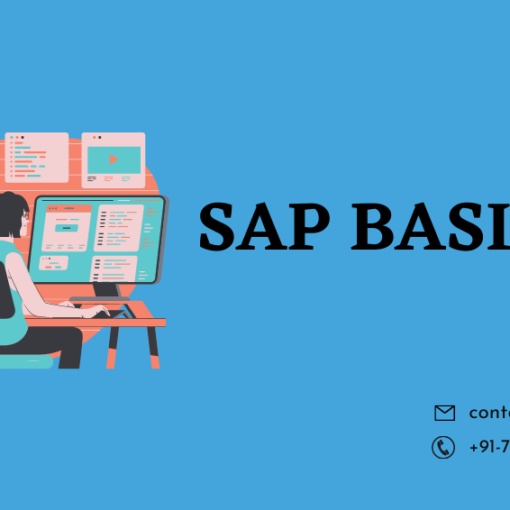
What is an SAP Implementation?
sap implementation services is a collection of practices and workflows intended to design, build and tune an SAP landscape. SAP landscapes are all unique, so SAP implementations are seldom the same. Each has its own organization-specific requirements based on distinctive SAP configurations, customizations and combinations of SAP and third-party modules. Unique adaptations aside, an sap implementation services is always about taking a vision for SAP in the business and turning it into a reality. It’s a multi-step process, with distinct phases.
What is the purpose of SAP implementation?
The purpose of SAP implementations is to introduce and integrate the SAP software system into an organization’s operations with the goal of improving business processes, enhancing efficiency, and gaining better control over various aspects of the organization. Here are the primary purposes of SAP implementations:
- Streamline Business Processes: sap implementation services aims to streamline and optimize an organization’s business processes. By aligning these processes with the capabilities and best practices offered by SAP, organizations can eliminate redundancies, automate tasks, and improve overall efficiency. This leads to improved productivity, reduced costs, and enhanced operational performance.
- Enhance Data Management: sap implementation services provides a robust platform for managing and integrating data across different departments and functions within an organization. The system allows for centralized data storage, real-time data access, and consistent data management practices. This enhances data accuracy, reliability, and availability, enabling better decision-making and reporting.
- Enable Cross-Functional Integration: sap implementation services facilitates seamless integration across various functional areas of an organization, such as finance, sales, procurement, human resources, and supply chain management. By connecting these departments and providing a unified view of operations, SAP enables efficient collaboration, streamlined workflows, and better coordination between different teams.
- Improve Financial Management: SAP’s financial modules, such as SAP FICO (Financial Accounting and Controlling), provide comprehensive tools for financial management, including general ledger, accounts payable, accounts receivable, asset accounting, and financial reporting. SAP implementation enables organizations to enhance financial processes, ensure compliance with regulations, and generate accurate financial statements.
- Enhance Reporting and Analytics: sap implementation services empowers organizations with powerful reporting and analytics capabilities. The system enables the generation of customized reports, real-time insights, and data visualization, allowing stakeholders to make informed decisions. With SAP’s analytics modules, organizations can perform data analysis, forecasting, and predictive modeling, contributing to strategic planning and business growth.
- Support Business Growth and Adaptability: SAP implementation provides organizations with a scalable and flexible platform that can accommodate growth and adapt to changing business needs. The system can handle increased transaction volumes, support expansion into new markets, and incorporate additional functionalities as required. SAP implementation helps organizations to stay agile and responsive in a rapidly evolving business environment.
- Standardize Processes and Best Practices: SAP offers a range of pre-defined processes and best practices that organizations can adopt during implementation. This standardization ensures consistency, improves efficiency, and simplifies training and knowledge transfer. By aligning with SAP’s industry-specific templates and guidelines, organizations can adopt proven practices and optimize their operations.
Installation vs. Migration vs. Upgrades
SAP implementation work arises in three main settings. The first is installation, such as with a product like SAP S/4HANA. New or old customers need installations. With an existing customer, the implementation may occur because the customer has such an extensively customized landscape that it’s better in the long-run to build a new system from scratch.
Migrations, in contrast, involve moving an SAP product between hosted environments. A migration might also mean moving SAP from one database to another. Migrations usually occur in multiple phases. They are by nature, complex and require frequent testing. An SAP upgrade is an implementation project that moves an SAP instance to a newer version. This could be something relatively simple, like adding enhancement packs. Some upgrades are challenging, however, requiring a great deal of planning and testing to successfully implement.
Types of SAP Implementation
In our experience, we see two main types of SAP implementation. Generally, you can either build an SAP landscape from scratch, known as a “greenfield” project, or modify an existing one, in a “brownfield” scenario. A new business is always a greenfield, while brownfield migrations usually occur when your SAP landscape is out of date. In some cases, though, it’s more efficient to skip the brownfield and start from scratch. This may be advised when your data has been corrupted, for example.
Lifecycle vs. Steps vs. Phases
In discussing an SAP implementation, it’s easy to get mixed up by a couple of similar-sounding terms that SAP consultants use to describe the work. These include “lifecycle,” “steps” and “phases.” They’re related concepts, but each has a different meaning. When we talk about lifecycle, we’re talking about the “age” of an SAP product. SAP product age is not measured in years. Rather, a new product is at the start of its lifecycle. One that is being retired is referred to as “End of Life” or EOL, even if it was only introduce a few years earlier. Many SAP implementation projects arise because a product is approaching EOL and needs to be replaced.
An SAP implementation has five basic steps:
- Project preparation
- Business blueprint
- Realization
- Final preparation
- Go Live support
In Project Preparation, you get ready to implement by identifying objectives, priorities and scope. During this initial planning phase, you work on gaining stakeholder support while lining up resources. Business Blueprinting is about defining the business processes your landscape will address. Realization is where the implementation team takes the business blueprint as the starting point to build, test and refine the landscape. Up until this point, the process has been headed up by the functional team, who are primarily concerned with what the system does. In realization, the technical team starts to take a bigger role. In Final Preparation, your team prepares for migration and go-live. Go Live Support means flipping the switch and then looking after the newly-implemented SAP landscape.
The phases of an SAP implementation occur in parallel with the steps described above. They include Onsite Initiation, which is an initial kickoff with the technical team and key stakeholders. Data Center and Network Setup involves provisioning and then configuring whatever on-premises infrastructure is needed, including Disaster Recovery (DR). SAP General Activities cover other preliminaries and getting ready for implementation by downloading software, etc. Sandbox Migration is where you migrate the SAP landscape incrementally in advance of production migration. Development Migration comprises working out issues that inevitably arise in the implementation process. The Production Migration itself is the final phase.
Costs of an implementation
What does an SAP implementation cost? Unfortunately, there is no straight answer, but in general is not an inexpensive process. Each implementation is different in terms of scope, length of time and required resources. Thus, the budgets vary accordingly. However, what we’ve found is that good planning helps keep projects as economical as possible. And, an investment early on in detailing the requirements review and scoping will pay dividends in lower costs over time. Hiring the right project managers similarly keeps the process under control, in terms of cost.
Do You Need To Use A Guide?
An SAP Implementation Guide is an optional, but recommended deliverable in an SAP implementation. We recommend it for all of our clients. It doesn’t have to be a big document. The high-level guide sets out the basic goals of the implementation. It lets people know what’s expected of them, role by role. The guide is also a place to communicate the project calendar. This is useful for stakeholders. Letting people know about deadlines and critical points in the implementation process avoids headaches like accidentally planning for a major review when key people are out on vacation. The guide lets people know when they’re expected to perform certain tasks. For example, if someone has to order SAP licenses, a process that can take some time, it pays to give that person enough advance notice so the licensing doesn’t hold the implementation back.
SAP Implementation Methodology and Partners
SAP implementation has a standard methodology, known as Accelerated SAP or “ASAP.” Today, a new methodology called SAP Activate is starting to overtake ASAP as the standard. The partner you select to help with your SAP implementation ought to be well-versed in ASAP or Activate. This competency encompasses the technical and project management expertise required, but it really goes well beyond that.
The provider is your partner through the SAP implementation process. They can make a big difference in the subjective, organizational aspects of the process, such as bringing stakeholders together and facilitating discussions about business priorities for the new landscape. These tasks can be challenging for in-house teams due to political constraints, hierarchies and so forth.
Successful SAP implementations take investment and time. You want it done right. Having worked with some of the world’s largest and most demanding SAP enterprises, we are able to implement SAP according to best practices. We enable your organization to achieve maximum benefit from SAP while benefiting from a streamlined implementation process.
What Are The Steps In SAP Implementation?
In general terms, implementation of SAP software solutions is not an easy task because the companies deploying such solutions are either categorized as to big or large scale and most often they possess several distributed units globally.
This factor brings lots of diversity for the stakeholders who are willing to exacerbate the SAP implementation issues during the system development. During the time of project deployment if it fails to satisfy one or multiple criteria then it is obvious that reflected status will be a failure. Based upon a close examination it is seen that this failure usually arises because of the socio-technical system and in the big picture it cannot be attributed to the failure of technology.
Main steps of SAP implementation
The project implementation of SAP is actually intense and long where they require plenty of effort and resources from developers’ point of view. If they are not planned under proper segments then SAP projects can become tricky where SAP itself gives a well-defined methodology for project designing by delivering reliable results.
SAP implementation involves several faces including every stage of the software development life cycle (SDLC) for the project. It also divides the project according to the necessary phases and each phase is considered as a milestone. The project management team can actively concentrate on the recent phase and make their next move to prepare the following one. The most essential steps are-
- Project preparation
- Business blueprint
- Realization
- Final preparation
- Go live
- Production support
- Project preparation
Conclusion:
SAP implementation is a significant undertaking for any organization, but with careful planning, a competent team, and adherence to best practices, it can yield substantial benefits. A successful SAP implementation streamlines processes enhances efficiency, and provides a solid foundation for growth and competitiveness. By following the key considerations and best practices outlined in this blog, organizations can navigate the complexities of SAP implementation and unlock the full potential of this powerful ERP solution.





